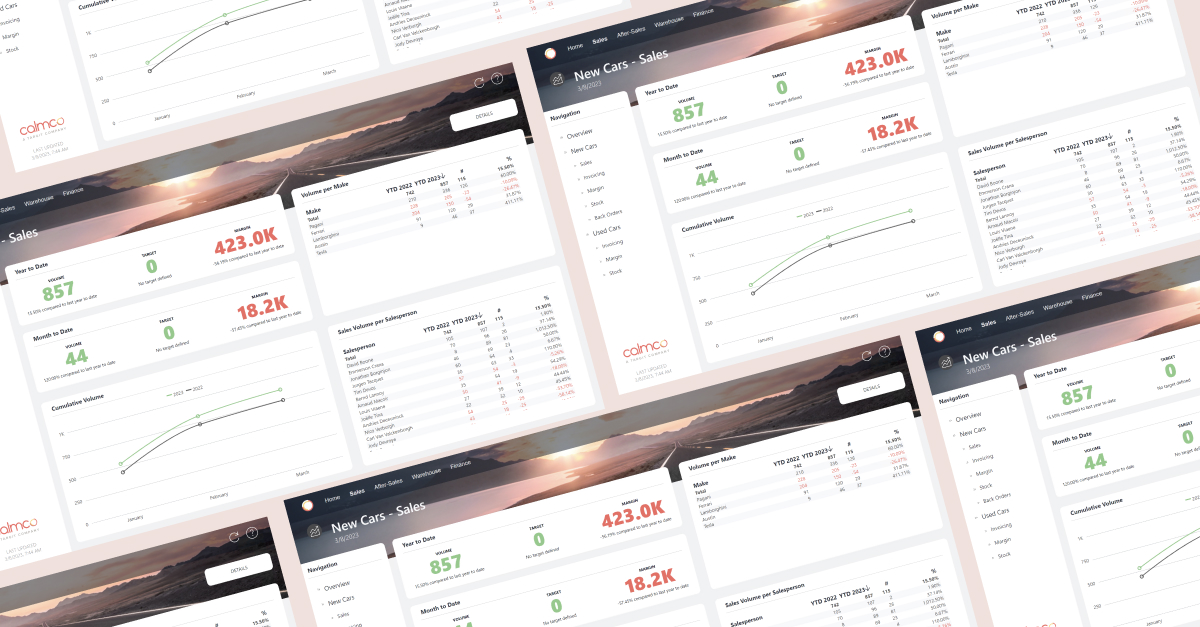Critical Factors Shaping the Future of Car Dealerships
Today’s car dealers must make room for emerging industry trends, market changes, and global events alongside their daily operations.
Not only do they need to closely monitor internal and external happenings that may impact their business, but they need agile, fast-moving strategies to keep up with the pace of change across the industry and respond to customers’ evolving expectations.
Trends Driving Change
While the pandemic and ongoing inflation have already caused significant shifts in the market — and consumer purchasing habits — several more specific trends are changing the way dealers approach their business and set targets for future success:
#1 Buyer behaviors are unpredictable and ever-changing
Even with the best data and market insights, it is impossible to predict how buyers’ preferences and behaviors will evolve. An endless string of factors can influence which car a person decides to buy and the path they take from initial research to final purchase.
Economic factors like inflation, increased interest rates, and supply chain issues are pushing buyers toward used vehicles rather than new ones. And even though 88% of buyers still prefer to see a vehicle in person before purchasing it, online sales are slowly gaining traction across the globe, potentially leaving dealers out of the equation entirely.
What’s more, if a new model, engaging sales pitch, or innovative feature leads buyers to suddenly shift their loyalty from one brand to another, local dealers stand to see significant, unfavorable drops in their percentage of market share.
#2 The widespread adoption of electric vehicles poses a threat to mid-sized dealers
Electric vehicle (EV) sales grew about 36% in 2022 according to S&P Global Mobility estimates, and they don’t show many signs of slowing down. In fact, the global EV market is projected to reach $823.75 billion by 2030, registering a CAGR of 18.2% from 2021 to 2030.
The growing EV market is causing notable disruption across the automotive industry, as manufacturers like Tesla allow consumers to bypass the dealership entirely and make direct vehicle purchases. Combined with new EV models from established global manufacturers, this trend puts many traditional, small to mid-sized dealers in a position to lose a significant share of the market.
Even the dealers that decide to stock and sell EV models still risk notable financial disruption if consumers swap out their internal combustion engine (ICE) vehicles for EV alternatives since EVs require much less routine maintenance than the average ICE vehicle.
To maintain their success as EV sales increase, dealers must find ways to:
- Identify new sources of recurring revenue
- Stock vehicles that align with customers’ expectations
- Integrate EV adoption into their business roadmap.
#3 Stringent manufacturer and legal requirements put many dealers at a disadvantage.
Manufacturer-imposed requirements on price, territory, and competition have been an integral part of the automotive industry for many years. While good for promoting healthy competition throughout the industry, these requirements often leave dealers at a disadvantage.
Dealers need robust management capabilities to ensure their operations align with manufacturer restrictions and requirements alongside local laws, franchise agreements, and other industry-specific guidelines.
The stakes have grown even higher in recent years as EV brands like Tesla and other market disruptors have begun circumventing the dealership altogether, offering direct sales, upgrades, and maintenance to drivers across the globe.
Dealers must agree to manufacturer-imposed policies or risk being cut out of multiple manufacturer agreements. While upholding stringent requirements, many dealers are also battling for market share against traditional competitors and disruptors like Carvana in the U.S.. This balance is likely to become even trickier to strike as used car prices decline in the coming years.
Strategies Fueling Success
To respond to market trends and adapt to consumer expectations, car dealers must leverage data in their performance management and decision-making processes. These efforts should go beyond retrospective analyses and high-level overviews. Instead, dealers should use comprehensive, up-to-date insights to:
#1 Maintain an in-depth understanding of their business and its competitors.
No matter what the future of car dealerships looks like, dealers should keep a close eye on how their business is performing in key departments, as well as how they’re ranked compared to competitors.
This means investing in a reporting solution that turns data into clear, actionable insights and measures progress toward key performance indicators (KPIs) or other strategic goals. The solution should also enable them to combine internal information with external market data. From there, dealers must be committed to following up on their findings and using data to optimize car dealership operations.
A dealership’s business intelligence (BI) and analytics operations are essential in helping them increase efficiency and identify opportunities for growth. Moreover, they also give dealers a distinct advantage if they decide to sell their business or seek external funding.
Rather than touting historical, high-level sales figures or brand recognition to convince a potential buyer or investor of their business’s value, dealers can accurately communicate and demonstrate the total value of their organization using comprehensive, up-to-date information.
#2 Ensure decision-making insights are generated from unbiased information.
Without comprehensive reporting and analysis tools, it can be challenging for dealers to make informed, unbiased business decisions. Many decisions across the dealership are influenced by manufacturers, competitors, individual employees, or family members of majority owners.
Uninformed decisions may be based on one person’s experience in a role, a manufacturer or competitor’s regulation, or even just a gut feeling. While these decisions may pan out in some cases, they aren’t reliable or scalable in the long term, especially in times of disruption or rapid market changes.
Fortunately, data helps dealers reframe strategies and decisions, ensuring their choices align with facts instead of opinions or emotions. Dealers can use up-to-date information to inform decisions, then test and monitor the progress of new initiatives to quickly see what works and what doesn’t. That way, they can pivot with the market rather than investing in a new tactic on a whim and waiting out the results with little to no benchmarks for success.
#3 Use BI data to monitor trends and improve forecasting.
Accurate forecasting is extremely difficult in today’s tumultuous market. While historical data may have provided sufficient forecasting insights in the past, dealers must now account for inflation, shifts in market share, and new competitors when planning for the future.
BI and analytics can strengthen dealers’ forecasting strategies by allowing them to monitor trends as they evolve, both internally and across the competitive market. This extra layer of analysis results in agile, more accurate forecasting that reflects where a dealership stands at the present moment, not what their operations looked like in years past.
Some valuable trends to monitor internally and externally include:
- Vehicle Stock Management
- Sales Margins by Profit Plan
- Sales Performance by Feature or Model
By generating reports related to these metrics, dealers can better understand how competitor strategies and consumer preferences are evolving and what tactics are working well within their own operations. All these insights are vital to accurate, actionable forecasting and improvement plans that will drive dealers’ businesses forward and keep them one step ahead of the competition.
Futureproof Your Dealership With TARGIT’s All-In-One BI Solution
No matter what the future holds for car dealerships, data will be integral in helping them navigate change and achieve their business goals.
Our all-in-one business intelligence (BI) solution puts that data within reach, enabling automotive dealers to make data-driven decisions and unlock new opportunities.
Designed specifically for the automotive industry, TARGIT integrates with all dealer management systems (DMSs) and other external data sources to give dealers a complete picture of their operations. Then, intuitive analytics tools make it easy for users to generate reports and interactive dashboards to measure KPIs in sales, after-sales, finance, and more.






